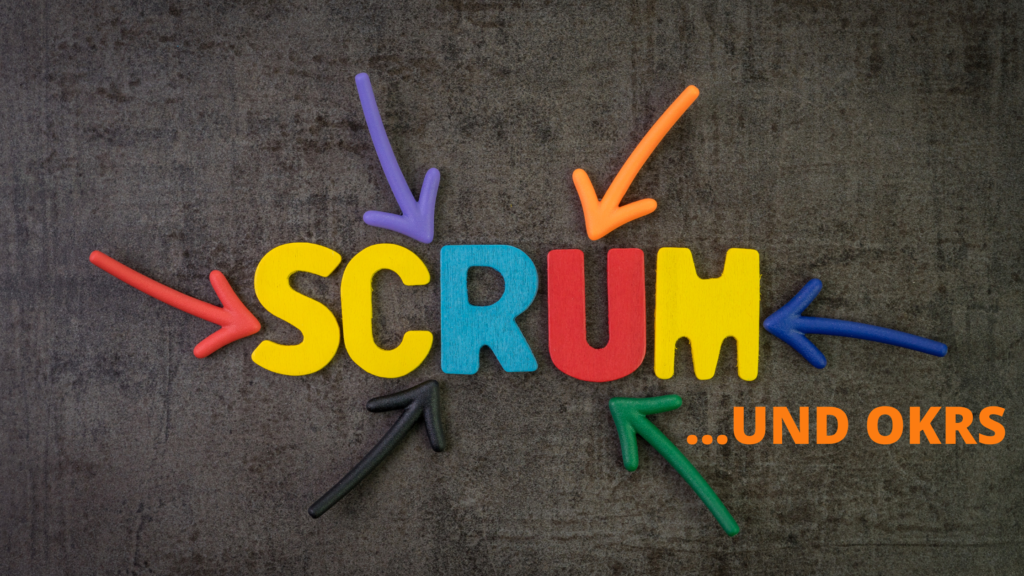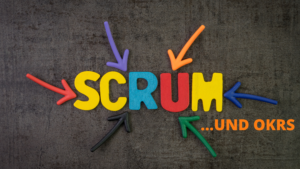Today’s blog post is an extract from a meetup organized by the Agilizer® Network and shows how OKR and Scrum can work jointly. The Agilizer® Partner André Classen shows with the help of the fictitious app „Flower Me“, the interaction and the added value that arises from using OKR for anybody working with Scrum.
What is the Agilizer® meetup?
In case you haven’t heard about it yet, with the support of the New Work Solutions GmbH and the Agilizer Academy, the Agilizer® Network hosts a free meetup series where renowned authors and other experts share their insights on different topics regarding transformation and agility.
Scrum conquers the agile world
For many years, Scrum has been a successful lightweight framework for working in complex situations or for developing sophisticated products. Initially, Scrum was mainly used in software development but has now conquered many other areas. Today Scrum can be found in marketing, hardware manufacturing, and the digitization of public administration.
Adaptive and agile companies with OKR
Questions about agile transformation have now also reached corporate management.
- How can companies react faster to market changes?
- How can ambitious strategies be developed and implemented in a self-organized manner?
One answer to these questions is the use of Objectives & Key Results (OKR). The framework OKR became popular through Google and is used by more and more companies in the course of agile transformation.
Similar to Scrum, OKR has different events for planning, implementation, and retrospective. There is even an OKR coach (or OKR master), based on the Scrum master, who supports and promotes the use of the OKR framework at the team or company level.
OKR meets Scrum: Can this work?
Due to the increasing popularity of both frameworks, the situation arises in many organizations where Scrum teams seem to suddenly encounter OKR. There is often a lot of confusion and OKR even seems to increase the meeting-overhead by adding more meetings.
Neither OKR nor Scrum provides simple answers to the combination of the two frameworks.
Worse still, the unreflective use of OKR in the Scrum process can lead to problems:
- So what applies now? Are the OKRs from the enterprise level or the Product Backlog?
- How should all the OKR Meetings be carried out in addition to the Scrum process?
- Is it perhaps even dangerous or negligent to combine Scrum and OKR?
The good news is: No, it is not!
OKRs are Product Goals
In the Meetup, André Claaßen shows five touchpoints, for the combination of OKR & Scrum.
The most important idea is provided by the current Scrum Guide 2020. In this revision of the Scrum Guide, the previously vague Product Vision became the Product Goals. And these Product Goals can be concretized by OKRs and serve as a frame for the following Scrum cycles.
But why should you do that? Well, there is a very simple reason. The OKR framework brings its own very interesting added values, from which Scrum teams benefit greatly.
Added value through the synthesis of OKR & Scrum
Scrum and agile methods originally responded to the software crisis 20 years ago. At that time, many IT projects simply delivered nothing.
Today the delivery is no longer the problem. In many Scrum teams, there is even too much attention on the output. These teams might feel like in a ticket factory and technical debt and frustration at work are growing.
This is where the OKRs come into play and provide a remedy:
- Product goals in the form of OKRs focus the work on the next OKR cycle (2-4 months). This makes prioritization much more accessible.
- OKRs are leading indicators. The success of the work becomes visible and tangible latest in the sprint reviews.
- OKR promotes thinking in outcomes. This means that success is not measured by the delivery of features, but by customer and user behavior.
- OKRs allow the synchronization of several Scrum teams through common (shared) product goals.
OKRs, properly applied, lead to a simplification and greater autonomy of the teams.
But how does it work exactly?
Five touchpoints for combining OKR & Scrum
Five points of contact that enable a combination of OKR and Scrum:
- Product Goal
- Product Backlog
- Sprint Planning
- Daily Stand-up
- Sprint-Review

Do you want to know more?
Then watch the video: https://www.youtube.com/watch?v=kMRFLiIRTQQ


